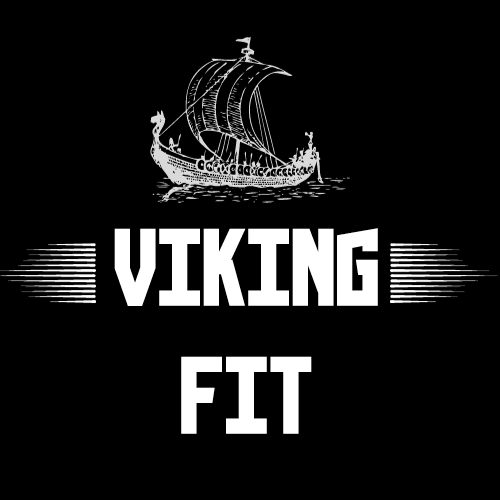Introduction:
Sign of gaining muscle and losing fat In the pursuit of a healthier lifestyle many people strive to achieve these two primary goals: . While these objectives may seem contradictory at first glance, they are indeed achievable simultaneously with the right approach. In this comprehensive guide, we’ll delve into the signs that indicate you’re successfully gaining muscle and losing fat, along with effective strategies to help you reach your fitness goals.
Table of Contents
Understanding the Basics:
Muscle Gain: Muscle gain, scientifically known as hypertrophy, occurs when muscle fibers adapt and grow in response to resistance training. Here’s a breakdown of the key factors involved in building muscle:
Resistance Training:
Engaging in strength training exercises such as weightlifting, bodyweight exercises, and resistance band workouts is crucial for stimulating muscle growth. These exercises create micro-tears in muscle fibers, prompting the body to repair and strengthen them, resulting in muscle hypertrophy.
Progressive Overload:
To continue making gains in muscle size and strength, it’s essential to progressively increase the intensity of your workouts over time. This can be achieved by lifting heavier weights, increasing the number of repetitions or sets, or varying the exercises to continually challenge your muscles.
Nutrition:
Proper nutrition plays a vital role in supporting muscle growth and repair. Consuming an adequate amount of protein is essential, as it provides the building blocks (amino acids) necessary for muscle synthesis. Additionally, maintaining a balanced diet rich in carbohydrates, healthy fats, vitamins, and minerals ensures optimal energy levels and overall health.
Fat Loss: Fat loss occurs when your body burns more calories than it consumes, leading to a reduction in stored body fat. Here are the key components of successful fat loss:
Caloric Deficit:
Creating a caloric deficit is the foundation of fat loss. This can be achieved by either reducing your calorie intake through diet or increasing your calorie expenditure through exercise, ideally a combination of both. Aim for a moderate deficit of 500 to 750 calories per day to promote gradual and sustainable fat loss.
Cardiovascular Exercise:
Incorporating cardiovascular activities such as running, cycling, swimming, or HIIT (High-Intensity Interval Training) into your routine can help increase calorie expenditure and accelerate fat loss. Aim for at least 150 minutes of moderate-intensity cardio or 75 minutes of vigorous-intensity cardio per week, as recommended by health authorities.
Resistance Training:
While resistance training primarily targets muscle growth, it also plays a significant role in fat loss. Building lean muscle mass increases your basal metabolic rate (BMR), meaning you burn more calories at rest. Additionally, resistance training sessions can contribute to overall calorie expenditure and promote fat oxidation.
Sign Of Gaining Muscle And Losing Fat

Balancing Muscle Gain and Fat Loss:
Achieving the delicate balance of gaining muscle and losing fat simultaneously requires careful planning and execution. Here are some strategies to help you achieve this equilibrium:
- Prioritize Protein: Ensure you’re consuming enough protein to support muscle growth while maintaining a caloric deficit for fat loss. Aim for 1.6 to 2.2 grams of protein per kilogram of body weight per day to optimize muscle protein synthesis.
- Monitor Progress: Track your progress using various methods such as body measurements, progress photos, and performance metrics (strength gains, endurance improvements). Adjust your nutrition and training regimen based on feedback to continue progressing towards your goals.
- Patience and Consistency: Building muscle and losing fat is a gradual process that requires patience and consistency. Stay committed to your fitness routine, and don’t get discouraged by temporary setbacks. Remember, sustainable results take time, but the journey is worth it.
Signs of Gaining Muscle:
Embarking on a journey to gain muscle is an exciting endeavor that requires dedication, consistency, and patience. As you engage in strength training and nourish your body with the right nutrients, it’s essential to recognize the signs indicating that your efforts are paying off. In this guide, we’ll explore the key signs that signify you’re making progress in gaining muscle, helping you stay motivated and focused on your fitness goals.
- Increased Strength: One of the most evident signs of gaining muscle is experiencing an improvement in strength. As you consistently challenge your muscles through resistance training, you’ll gradually notice that exercises become easier to perform. Whether you’re lifting heavier weights, completing more repetitions, or progressing to more advanced exercises, increased strength is a clear indication that your muscles are growing stronger and adapting to the demands placed upon them.
- Enhanced Muscle Definition: As your muscles grow in size, they become more defined and visibly sculpted. You may notice greater muscle definition in specific areas of your body, such as the arms, shoulders, chest, back, and legs. This increased definition is a result of both muscle hypertrophy and a reduction in body fat percentage, allowing your muscles to become more prominent and pronounced.
- Changes in Body Composition: Tracking changes in your body composition can provide valuable insights into your muscle gain progress. Methods such as body measurements, body fat percentage assessments, and progress photos can help you monitor changes in muscle mass and fat mass over time. Look for increases in lean muscle mass accompanied by decreases in body fat percentage, indicating a positive shift in your body composition.
- Muscle Fullness and Pump: Following a challenging workout, you may experience a sensation of muscle fullness and pump, where your muscles appear larger, tighter, and more vascular. This temporary increase in muscle size is due to improved blood flow, nutrient delivery, and cellular swelling within the muscle tissue. Embrace the post-workout pump as a sign that you’ve effectively stimulated your muscles and initiated the muscle-building process.
- Improved Muscle Endurance: As your muscles grow stronger and more resilient, you’ll likely notice improvements in muscle endurance during your workouts. You’ll be able to sustain higher levels of intensity and perform more repetitions or sets before reaching fatigue. This increase in muscle endurance is a positive indication of your muscles’ ability to adapt and handle greater training volumes over time.
- Clothes Fit Differently: As your body undergoes physical changes from muscle gain, you may find that your clothing fits differently. Your shirts may feel tighter around the chest and arms, while your pants may fit looser around the waist. Embrace these changes as a tangible reminder of your progress and the transformation taking place within your body.
- Increased Resting Metabolic Rate: Building and maintaining muscle mass can lead to an increase in your resting metabolic rate (RMR), the number of calories your body burns at rest. Muscle tissue is metabolically active, meaning it requires energy to sustain itself. As you gain muscle, your body becomes more efficient at burning calories, potentially leading to improvements in overall metabolic health and easier fat loss.
- Positive Feedback from Others: Sometimes, the most validating signs of muscle gain come from the observations of others. Friends, family members, or gym peers may comment on your physical appearance, noting your increased muscle definition, strength, or overall athletic prowess. While external validation isn’t the sole measure of progress, receiving positive feedback can boost your confidence and reinforce your commitment to your fitness journey.
Conclusion: Recognizing the signs of gaining muscle is essential for staying motivated and tracking your progress in the gym. By paying attention to indicators such as increased strength, muscle definition, changes in body composition, and improvements in endurance, you can celebrate your achievements and stay focused on your fitness goals. Remember that building muscle is a gradual process that requires patience, consistency, and dedication. Stay committed to your training regimen, fuel your body with nutritious foods, and prioritize recovery to maximize your muscle-building potential. With perseverance and determination, you’ll continue to see tangible results and progress towards the strong, healthy physique you desire.
Sign Of Gaining Muscle And Losing Fat

Signs of Losing Fat
Signs of Losing Fat: How to Recognize Progress in Your Weight Loss Journey
Introduction:
Embarking on a journey to lose fat is a significant step towards improving your overall health and well-being. As you make changes to your diet, exercise routine, and lifestyle, it’s crucial to recognize the signs that indicate you’re moving closer to your weight loss goals. In this guide, we’ll explore the key signs that signify you’re making progress in losing fat, empowering you to stay motivated and focused on your journey to a leaner, healthier body.
- Decreased Body Measurements:
One of the most tangible signs of losing fat is a reduction in body measurements. Keep track of changes in circumference measurements of key areas such as the waist, hips, thighs, and arms. As you lose fat, you’ll likely notice these measurements decreasing over time, indicating a reduction in overall body fat percentage. - Improved Body Composition:
Tracking changes in your body composition provides valuable insights into your fat loss progress. Methods such as body fat percentage assessments, progress photos, and body composition scans can help you monitor changes in fat mass versus lean muscle mass. Look for decreases in body fat percentage accompanied by improvements in muscle definition, indicating a positive shift in your body composition. - Increased Energy Levels:
As you lose fat and improve your overall health through diet and exercise, you’ll likely experience an increase in energy levels. Shedding excess fat can alleviate feelings of sluggishness and fatigue, allowing you to feel more energized and alert throughout the day. Embrace this newfound energy as a sign that your body is becoming more efficient at burning fat for fuel. - Clothes Fit Looser:
As your body undergoes physical changes from fat loss, you may notice that your clothes fit differently. Pants may feel looser around the waist, and shirts may hang more loosely around the midsection. Embrace these changes as a tangible reminder of your progress and the transformation taking place within your body. - Visible Changes in Body Shape:
As you lose fat, you’ll notice changes in your body shape and silhouette. Stubborn fat deposits, such as love handles or belly fat, may gradually diminish, revealing a more toned and defined physique. Pay attention to subtle changes in the contours of your body, such as increased muscle definition and a smoother appearance. - Improved Cardiovascular Health:
Losing excess fat can lead to improvements in cardiovascular health, including lower blood pressure, improved cholesterol levels, and enhanced heart function. As you prioritize physical activity and healthy eating habits, your body becomes more efficient at metabolizing fat and circulating oxygen-rich blood throughout your body, supporting overall cardiovascular function. - Enhanced Mood and Confidence:
As you make progress in your fat loss journey, you may experience positive changes in your mood and self-confidence. Achieving your weight loss goals can boost self-esteem, increase feelings of accomplishment, and improve overall mental well-being. Embrace these emotional changes as evidence of your resilience and determination to live a healthier lifestyle. - Consistent Progress Over Time:
Perhaps the most significant sign of success is consistent progress over time. Celebrate small victories along the way and stay committed to your weight loss journey for long-term results. Remember that fat loss is a gradual process that requires patience, perseverance, and consistency. Stay focused on your goals, and trust in your ability to achieve the results you desire.

Conclusion:
Recognizing the signs of losing fat is essential for staying motivated and tracking your progress on your weight loss journey. By paying attention to indicators such as decreased body measurements, improved body composition, increased energy levels, and visible changes in body shape, you can celebrate your achievements and stay focused on your goals. Remember to prioritize healthy habits such as regular exercise, balanced nutrition, and adequate sleep to support your fat loss efforts. With dedication and perseverance, you’ll continue to see tangible results and progress towards a leaner, healthier body.
Strategies for Achieving Both Goals Simultaneously: Sign Of Gaining Muscle And Losing Fat
Introduction:
Achieving the dual goals of gaining muscle and losing fat simultaneously is the epitome of fitness success, requiring a strategic approach that balances nutrition, exercise, and lifestyle factors. While it may seem challenging, with the right strategies and mindset, it’s entirely possible to sculpt a leaner, stronger physique. In this guide, we’ll explore effective strategies for achieving both goals simultaneously, empowering you to maximize your results and transform your body composition.
- Prioritize Protein Intake:
Protein is the cornerstone of muscle growth and repair, making it essential for anyone aiming to build muscle. Aim to consume a sufficient amount of protein with each meal to support muscle protein synthesis while preserving lean muscle mass during periods of calorie deficit. Incorporate lean protein sources such as chicken, fish, tofu, eggs, and Greek yogurt into your diet to meet your protein needs. - Embrace Strength Training:
Strength training forms the foundation of any successful body recomposition program, stimulating muscle growth while promoting fat loss. Focus on compound exercises that target multiple muscle groups simultaneously, such as squats, deadlifts, bench presses, and rows. Aim to progressively overload your muscles by gradually increasing the weight, reps, or sets over time to stimulate continuous muscle growth and adaptation. - Implement High-Intensity Interval Training (HIIT):
Incorporating HIIT workouts into your exercise routine can enhance fat loss and improve cardiovascular health while preserving lean muscle mass. HIIT involves alternating between short bursts of high-intensity exercise and brief recovery periods, effectively increasing calorie burn and boosting metabolism both during and after exercise. Include HIIT sessions 2-3 times per week to complement your strength training routine and accelerate fat loss. - Monitor Caloric Intake and Expenditure:
To simultaneously gain muscle and lose fat, it’s essential to create a calorie balance that supports both goals. Determine your daily calorie needs based on your activity level, metabolism, and goals, then adjust your intake accordingly. Aim for a moderate calorie deficit to facilitate fat loss while providing enough energy and nutrients to support muscle growth and recovery. Keep track of your food intake and adjust your caloric intake as needed based on your progress and feedback from your body. - Incorporate Strategic Refeeds:
Periodic refeed days or meals can help mitigate the negative effects of prolonged calorie restriction on metabolism and hormone levels while supporting muscle growth and performance. On refeed days, temporarily increase your calorie intake, primarily from carbohydrates, to replenish glycogen stores, boost leptin levels, and enhance metabolic rate. Schedule refeed days strategically, such as after intense training sessions or at regular intervals throughout the week, to maximize their benefits without derailing your progress. - Focus on Nutrient Timing:
Optimizing nutrient timing can play a crucial role in supporting muscle growth, fat loss, and overall performance. Prioritize consuming protein and carbohydrates around your workouts to fuel training sessions, enhance muscle protein synthesis, and promote recovery. Aim to consume a balanced meal or snack containing protein and carbs within 1-2 hours before and after your workouts to optimize nutrient delivery to your muscles and maximize muscle-building potential. - Get Sufficient Sleep and Manage Stress:
Quality sleep and stress management are essential components of any successful body recomposition plan. Aim for 7-9 hours of uninterrupted sleep per night to support hormone balance, recovery, and overall well-being. Practice stress-reducing techniques such as meditation, deep breathing exercises, and time management strategies to minimize the negative impact of stress on cortisol levels and metabolism. Prioritize self-care practices that promote relaxation and rejuvenation to optimize your body’s ability to build muscle and burn fat effectively. - Stay Consistent and Patient:
Achieving both muscle gain and fat loss simultaneously is a gradual process that requires consistency, patience, and dedication. Stay committed to your nutrition and exercise plan, even when progress seems slow or stalls temporarily. Celebrate small victories along the way, such as improvements in strength, endurance, or body composition, and trust in the process. Remember that sustainable results take time to manifest, so stay focused on your long-term goals and embrace the journey towards a stronger, leaner, and healthier you. we recommended you How to build muscle and lose fat in 2024 Full Guide For Beginners
Conclusion:
Simultaneously gaining muscle and losing fat is an achievable goal that requires a multifaceted approach encompassing nutrition, exercise, and lifestyle strategies. By prioritizing protein intake, embracing strength training and HIIT, monitoring caloric intake and expenditure, incorporating strategic refeeds and nutrient timing, prioritizing sleep and stress management, and staying consistent and patient, you can optimize your body recomposition efforts and transform your physique. Remember that every individual’s journey is unique, so listen to your body, make adjustments as needed, and celebrate your progress along the way. With dedication, perseverance, and a positive mindset, you can achieve remarkable results and unlock your full potential.

Conclusion:
Achieving the dual goals of gaining muscle and losing fat simultaneously is a challenging yet rewarding endeavor that requires a comprehensive and strategic approach. Throughout this guide, we’ve explored effective strategies for optimizing your body composition, empowering you to sculpt a leaner, stronger physique and improve your overall health and well-being.
By prioritizing protein intake, embracing strength training and HIIT, monitoring caloric intake and expenditure, incorporating strategic refeeds and nutrient timing, prioritizing sleep and stress management, and staying consistent and patient, you can maximize your body recomposition efforts and accelerate progress towards your goals.
It’s important to remember that every individual’s journey is unique, and results may vary based on factors such as genetics, metabolism, and lifestyle. Listen to your body, make adjustments as needed, and celebrate your progress along the way. Stay focused on your long-term goals, and trust in your ability to overcome challenges and achieve success.
Ultimately, achieving simultaneous muscle gain and fat loss requires dedication, perseverance, and a positive mindset. Embrace the journey, enjoy the process, and celebrate the transformations—both physical and mental—that occur along the way. With determination and consistency, you can unlock your full potential and become the best version of yourself.





Pingback: Best Pre Workout For Muscle Growth - Vikingfit22.com
Pingback: The Best Testosterone Booster For Muscle Gain - Vikingfit22.com
Pingback: Does Releasing Sperm Affect Muscle Growth? Full Guide 2024 - Vikingfit22.com
Pingback: The Power Of Suicide Exercises : Unlock Mental Health - Vikingfit22.com